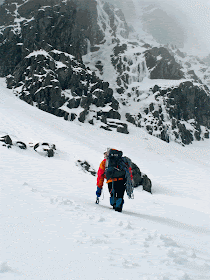Winter conditions
From a pure meteorological perspective, the definition of winter is when the average temperature over a 24-hour period is below 0°C. Cold, winter-like conditions can occur at any time during the year, particular at high altitudes. However, if we ignore this theoretical definition of winter, a common, but more relaxed, definition of winter is the arrival of both snow – as well as the advantages and disadvantages snow brings – and cold temperatures. But winter does not necessarily mean temperatures in the extreme minus; rapidly changing weather often causes problems when temperatures fall and wet conditions freeze. This type of variation at relatively mild temperatures can actually be more difficult to handle than persistent, extremely low temperatures.
Snow - both friend and foe
Snow often makes it easier to move through nature since you can glide on skis or pull equipment on a sledge. You can melt snow for drinking or dig a bivouac or hole to wait out bad weather. But snow can also test your ability to navigate since snow-covered contours and landmarks take on a different appearance than when they are bare. Heavy snow can quickly eliminate all visibility, and snow that drifts up the sides of mountains can, if the wind is strong enough, quickly turn into a potential avalanche.
In order to enjoy your experience, you need to know some basics about how to adapt to the snow. The follow-up question, naturally, is then “So, what do I do?”. One of the primary things you need to do is let go of some of the mental blocks and preconceptions that you may have and focus directly on the uncertainty that affects how you react to the cold. This means you should spend a lot of time outdoors in order to gradually discover what winter is like and how beautiful it can be. When Mother Nature then unleashes one of her disagreeable outbursts, you will be better prepared mentally and will be able to make smarter decisions. You will also be able to tackle the challenges winter throws at you, and you will find it easier to “dig deep” in more difficult moments.
In short, there is a long list of reasons why you should prepare for a winter trek differently than you would for a summer trek. But with the right preparations and equipment, almost anyone can learn to handle the cold – and therefore also safely appreciate its beauty.
